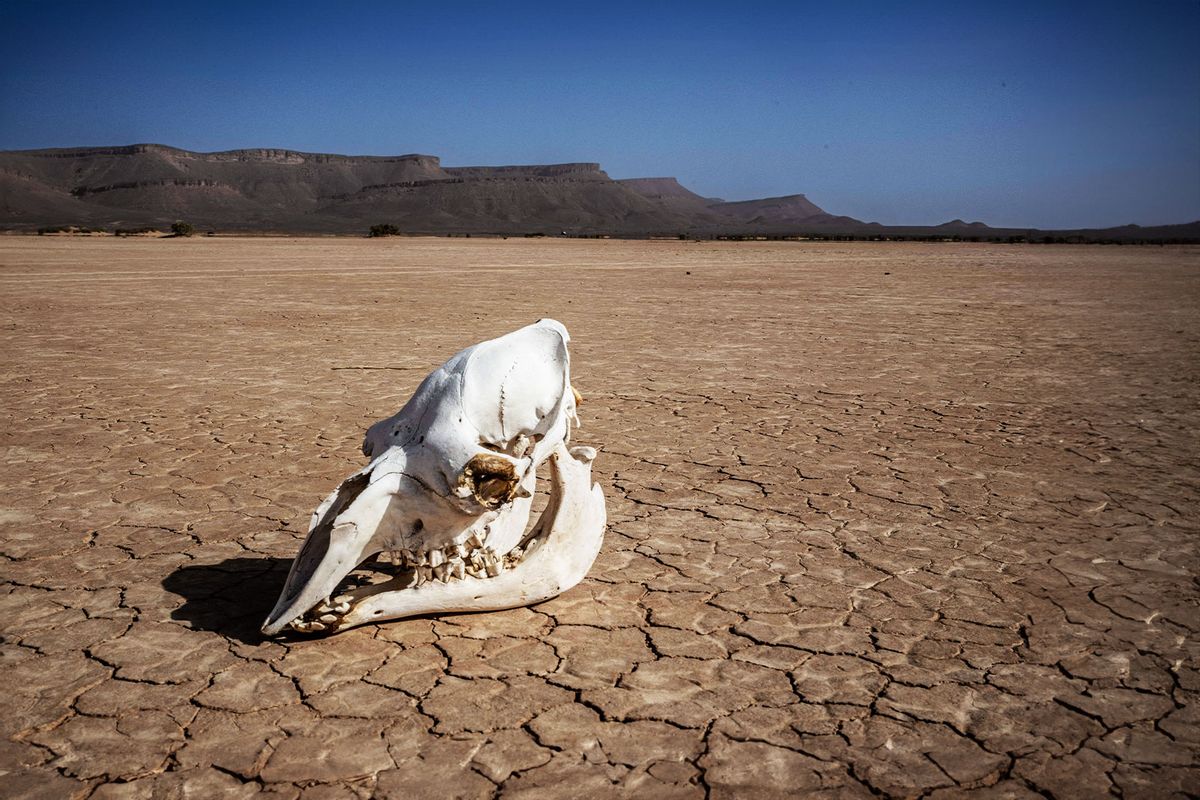In the 1973 sci-fi movie "Soylent Green," the year 2022 is depicted as a world so ravaged by pollution that the temperature never drops below 90°F (32°C). Food is scarce; millions of people are homeless and crowd together in hallways just to sleep; the government has become overtly authoritarian. While things are not currently that bad (at least not yet), studies on climate change repeatedly indicate that the heat-based premise of "Soylent Green" is rapidly becoming close to reality.
Why is this not universally regarded as the biggest news story in the world?
Consider a study published last week in the journal Proceedings of the National Academy of Sciences (PNAS), which studied wet bulb temperatures (meaning the temperature measured by a wet thermometer in the shade as water evaporates off it). If wet bulb temperatures exceed 31°C (88°F), people cannot consistently perform physical labor without endangering their lives; in temperatures that exceed 35°C (95°F), a healthy human can die within a few hours without access to water or shelter. The authors of the PNAS study analyzed "wet-bulb temperature thresholds across a range of air temperatures and relative humidities" using bias-corrected climate change models. Their conclusions were sobering.
"Some of the most populated regions, typically lower-middle income countries in the moist tropics and subtropics, violate this threshold well before 3°C of [global] warming," the authors write. "Further global warming increases the extent of threshold crossing into drier regions, e.g., in North America and the Middle East. These differentiated patterns imply vastly different heat adaption strategies."
There is no universe in which the spread of intolerable heat and humidity will not lead to millions of agonizing deaths. Temperatures above 95°F "are not conditions we can just get used to."
Put bluntly: If global temperatures increase by 1 degree Celsius or more above their current levels, billions of people will face wet-bulb temperatures every year so intense that their bodies will not be able to naturally cool themselves. Indeed, if global temperatures exceed 2 degrees above pre-industrial levels, 4 billion people will encounter intolerable heat and humidity on a yearly basis, often in regions where air conditioning and other forms of relief are not widely available. That could include more than 2 billion people in Pakistan and India, 1 billion in eastern China and 800 million people in sub-Saharan Africa. Once global temperatures rise 3 degrees above pre-industrial levels, much of the U.S. Northeast, Southeast and Midwest will also regularly experience unlivable wet-bulb temperatures.
Want more health and science stories in your inbox? Subscribe to Salon's weekly newsletter Lab Notes.
The term "misery" is, if anything, an understatement here. There is no universe in which this development will not lead to millions of deaths. "It is important to understand that wet-bulb temperatures of 95°F (35°C) are not conditions we can just get used to," Dr. Peter Reiners, a professor of geosciences at the University of Arizona, wrote for Salon in 2021. "Human bodies have fundamental physiological limits; our planet's perturbed, angry climate doesn't care about them. Air conditioning may save some, but increased demand and likelihood of outages in already strained power grids makes this a risky bet at best."
The recent PNAS study is hardly the only one to point to a heat-based apocalypse in humanity's near-future. A July study in the same journal analyzed decades of climate and precipitation data and found that by the late 21st century, large sections of the world will regularly experience so-called compound drought and heatwaves, or CDHW events. These events will happen roughly twice a year, each one lasting approximately 25 days, in many of the same areas impacted by intolerable wet-bulb temperatures: from eastern North America to East Africa and Central Asia, among other regions.
We need your help to stay independent
"Compound drought and heatwaves severely threaten socio-ecological systems, leading to greater impacts — e.g., wildfires, crop failure and heat-related mortalities — than individual extremes," study co-author Dr. Ashok Mishra, a professor at Clemson University's Department of Environmental Engineering and Earth's Science, told Salon at the time. Co-author Dr. Michael Mann, a professor of earth and environmental science at the University of Pennsylvania, warned that this overheated future is already visible, given that summer 2023 was the hottest recorded in human history.
"It's a 'new abnormal' and it is now playing out in real time — the impacts of climate change are upon us in the form of unprecedented, dangerous extreme weather events. It will only get worse and worse as long as we continue to burn fossil fuels and generate carbon pollution," Mann told Salon.
If humanity wants to avoid a future in which much of the planet becomes unbearably hot, in other words, it is crucial to reduce the use of fossil fuels and drastically cut down emissions of other greenhouse gases. While hotter summers seem inevitable at this point, scientists largely agree that the worst-case scenario can be avoided through prompt and decisive action. For that to happen, however, we have start by paying attention. Our overheating planet is without question the biggest news story in the world. So why don't we treat it that way?
An earlier version of this article originally appeared in Salon's Lab Notes, a weekly newsletter from our Science & Health team.
Read more
about climate change

Shares